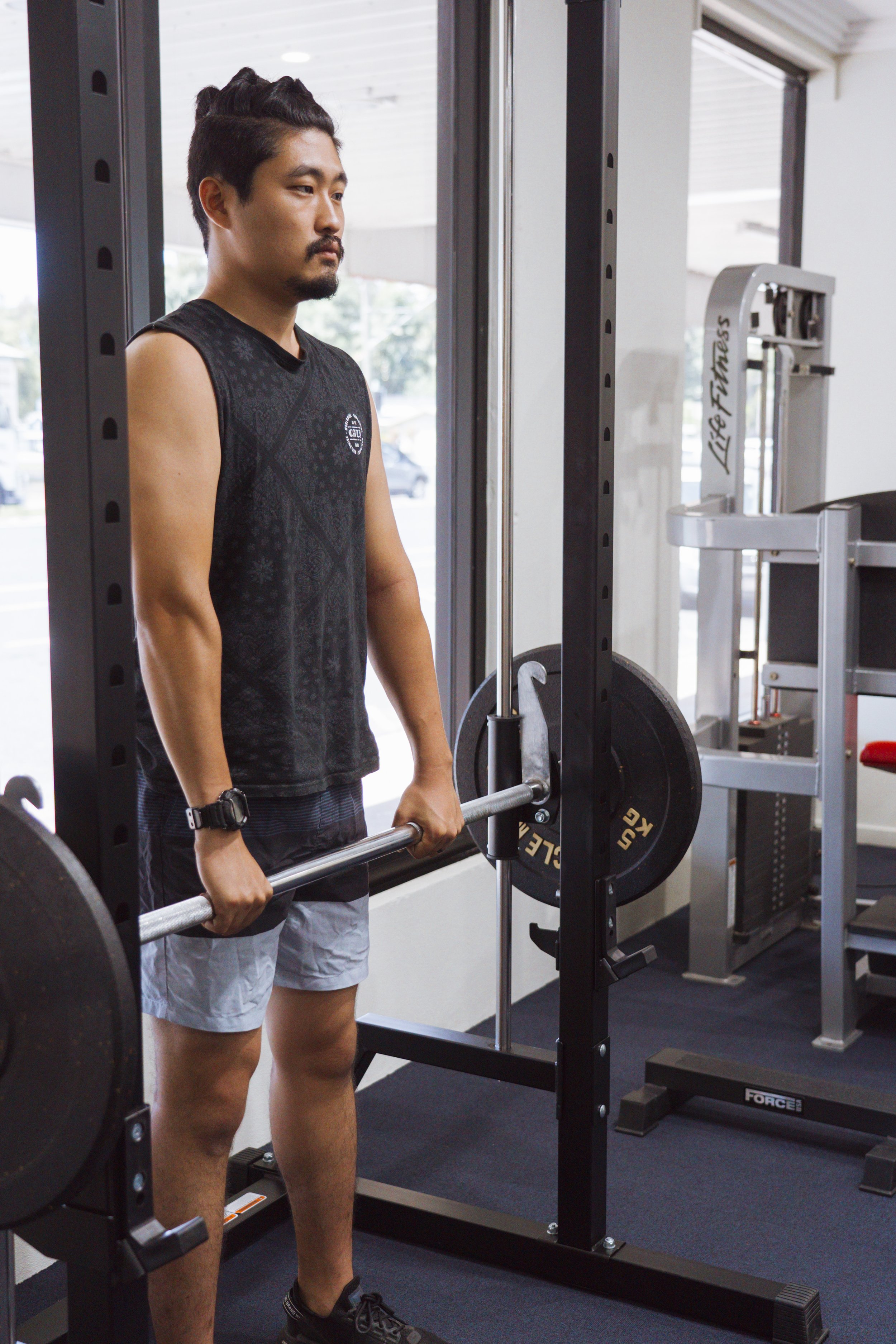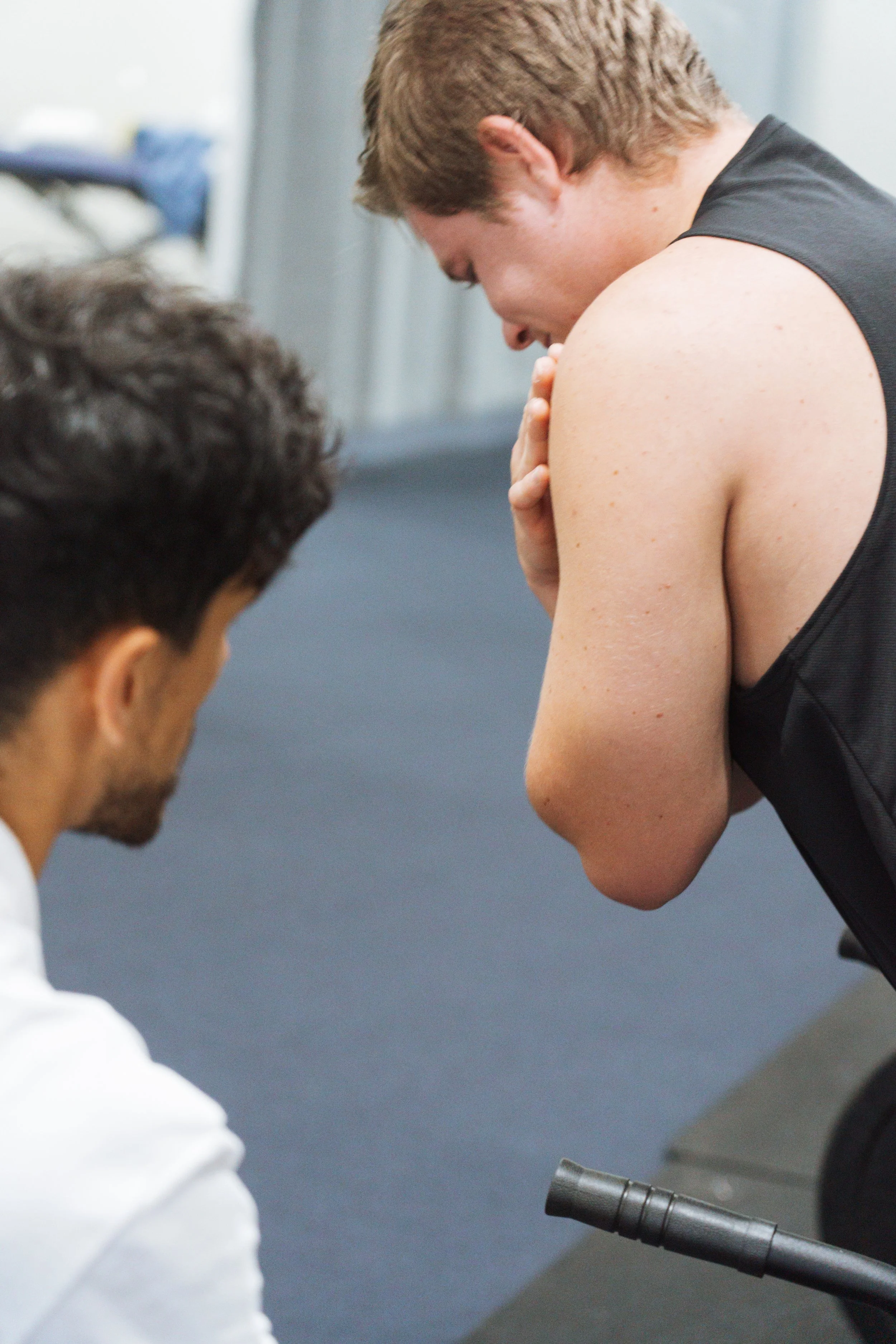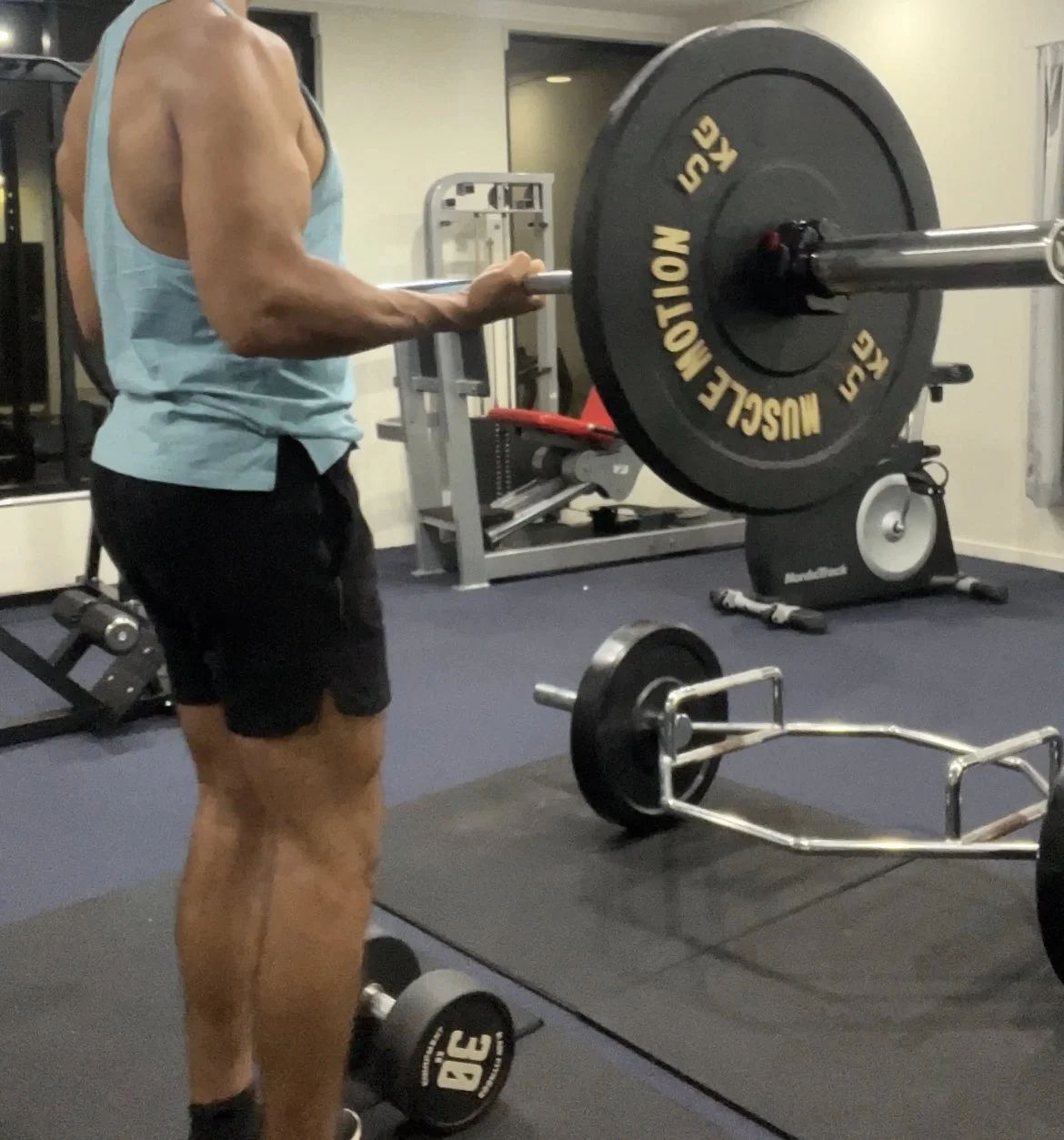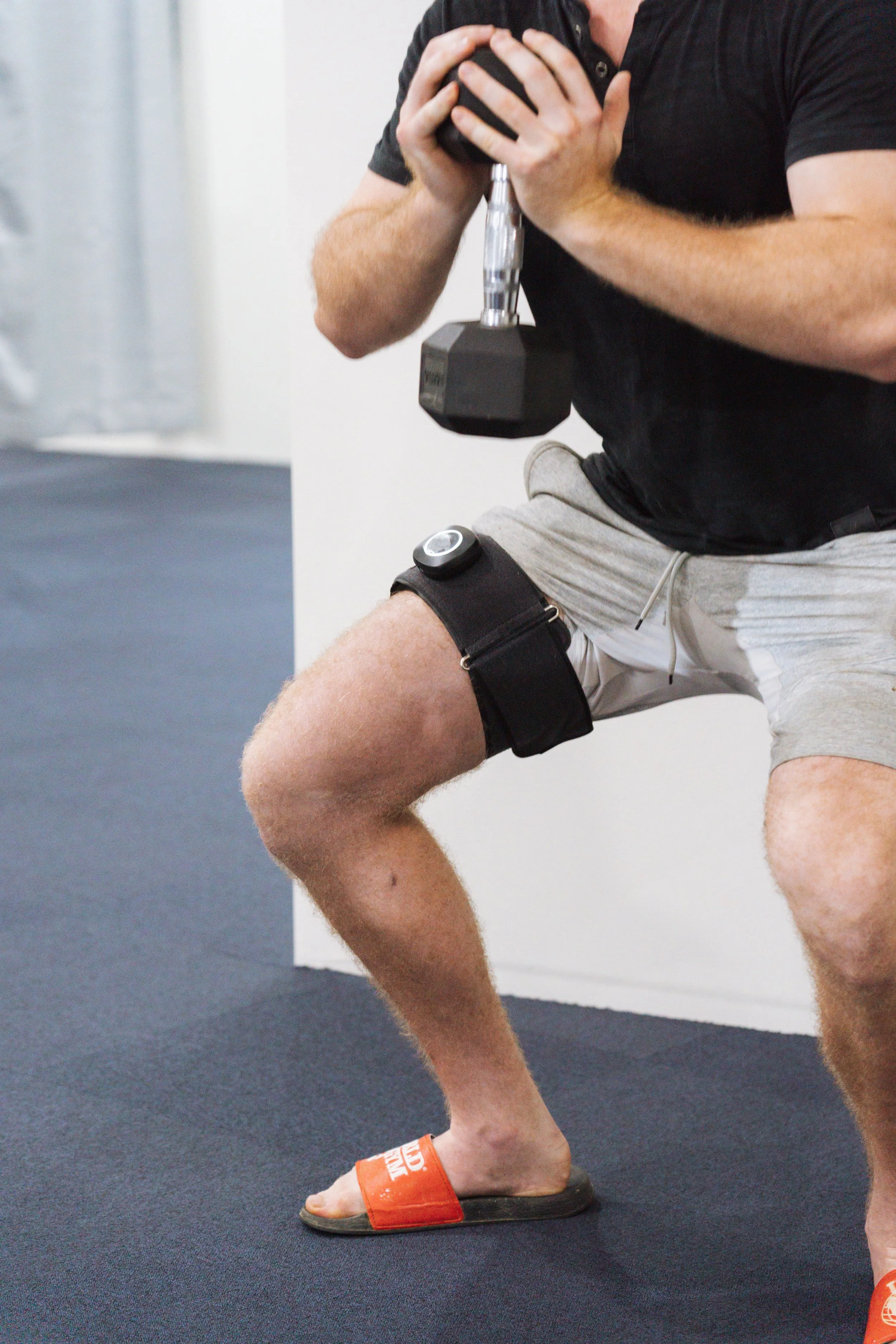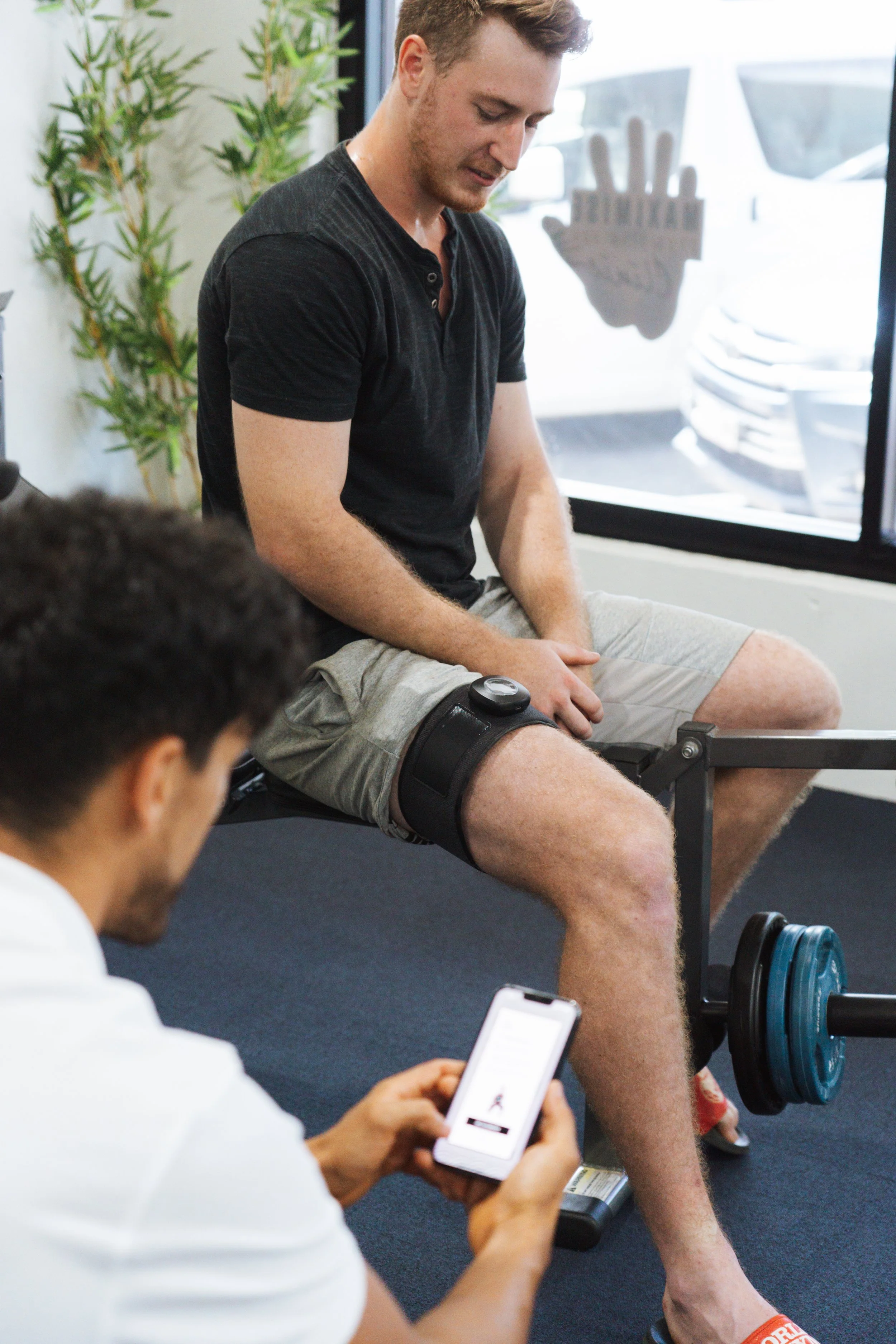What is Blood Flow Restriction Training?
Strengthening…. a lot of the time it is one of the main goals of physiotherapy, no matter who the patient is.
From the professional AFL player recovering from a knee reconstruction, to the elderly man struggling to stand from sitting ,there are a huge number of our patients who need to get stronger, quickly.
There are lots of things that can contribute to how strong you are. To keep it simple the most important factors are…..
1) How skilled you are at performing a movement - the better you are at performing a movement the more efficient you are
2) How big your muscle is - a larger muscle has more microscopic contractile elements
3) How many messages are sent from the brain to the muscle group(s) performing a movement - all to do with the brain, spinal cord and nerves that run to the muscle
In order to increase our strength all of these must improve.
1) Becoming more skilled
Becoming more skilled is easy…. we just practice over and over. However, skill is also relative. Being highly skilled at picking a pen up of the ground has very little carry over to picking up a 40 kilo bag of pool salt!
2) Bigger Muscles
Muscles becoming bigger is called hypertrophy. Very simply, for hypertrophy to occur the amount of proteins being formed (protein synthesis), needs to be greater than the amount being broken down (protein degradation).
We can encourage more muscle protein synthesis by putting muscles under lots of mechanical tension and by the accumulation of lots of waste products (metabolic accumulation). Aside from taking lots of anabolic steroids, the only way to meaningfully increase muscle protein synthesis is through exercise!
STILL FOLLOWING US……
Now for exercise to cause high amounts of mechanical tension and build up of waste products we need to be using relatively heavy loads and be working very hard… these factors will be important in a minute!
3) Signals from the brain to the muscles
Increasing the potential number of signals sent to the muscles performing a particular moving is called neurological adaptation.
More signals = the muscles working harder.
Whilst doing lots of low intensity movement can increase the efficecy of these signals to a small degree, making the target muscles work hard (and therefore encouraging a lot of signals to be sent) is far more effective.
SO WHAT DOES THIS MEAN
The message here is that to get significantly stronger we need to be exercising using heavy loads (relative to that person) at a high intensity to increase skill, get bigger muscles and increase the number of signals being sent to the muscles.
Lets use the arm and a heavy bicep curl for an example.
As you do a heavy bicep curl the muscle has to work hard to perform the movement, this directly causes large amounts of mechanical tension
Muscles working hard also require lots of energy immediately. Energy is is most efficently produced in the presence of oxygen, but this process takes time.
Because this process takes too long the required energy is produced much less efficiently and many waste products are produced.
If we are lifting very light loads the the muscle doesn’t have to work hard, and the body is able to supply the muscle with sufficient oxygen so very few waste products are produced.
HOWEVER…..
As physiotherapists many of our patients are unable to use heavy loads. There can be many reasons, maybe they are in high levels of pain, have post operative lifting restrictions or the thought of lifting something heavy may feel scary or daunting after an injury.
ENTER BLOOD FLOW RESTRICTION TRAINING
Blood flow restriction training is using a device to limit blood flow to a target muscle…..
Take the same bicep curl but this time with a light weight. If blood flow is restricted the muscle cannot continue to rely on oxygen for energy. This makes it’s energy production inefficient and large amounts of waste products are produced. It also causes the muscle to fatigue rapidly and start to work hard, this mean lots of signals being sent to the muscle to contact AND lots of mechanical tension
SO WE CAN USE RESTRICTION OF BLOOD FLOW TO A TARGET MUSCLE TO CAUSE HIGH AMOUNTS OF MECHANICAL TENSION AND WASTE PRODUCTS, AND LARGE AMOUNTS OF NEUROLOGICAL ADAPTATION. SIGNIFICANT STRENGTHENING USING LIGHT LOADS!!!!!
This has huge potential for all the patient mentioned above that can’t use heavy loading.
SO HOW DOES IT WORK?
Here at Maximise we have the latest generation of blood flow restriction cuffs. They essentially function as tourniquets around a limb which tighten up to reduce blood flow.
These cuffs are able to calibrate to each individual and we are able to set custom amounts of pressure based upon the calibration.
Normally prescribed exercises are then performed using lighter loads, with short rest breaks in between sets. Whilst there are a few specific repetition and set schemes that have been recommended (the most popular being 4 sets of 30, 15 ,15 15 with 30 second rest breaks) the best rep and set scheme using BFR training has yet to be ascertained.
Blood flow restriction training isn’t new. A form of it called Kaatsu training has actually been around since the 1980s. It started to be studied quite intensively in the exercise science world over the last decade. But it’s use specifically within physiotherapy evidence and treatment has only really started to take off in the last 5 years or so.
WHAT IS THE PHYSIOTHERAPY EVIDENCE?
Studies have shown;
Prevents disuse muscle wasting in those unable to exercise
After ACL reconstruction BFR training produces superior quadricep and hamstring strength levels when compared with normal rehab
Can give significant pain relieving effects when compared with traditional exercise.
Shows promise as a potential treatment tool for those with chronic pain
Shows promise in encouraging positive remodelling of bone and tendon
Safe across the entire population range, with significant strength and hypertrophy benefits found in the elderly population
Whilst the number of specific physiotherapy studies are relatively small, as mentioned there are now 1000s of exercise science based studies on BFR training. We can use these studies to inform our practice to decide whether blood flow restriction training is appropriate for you!
If you would like to know more about blood flow restriction training, or if you would like to book a physiotherapy appointment, contact our team today.

